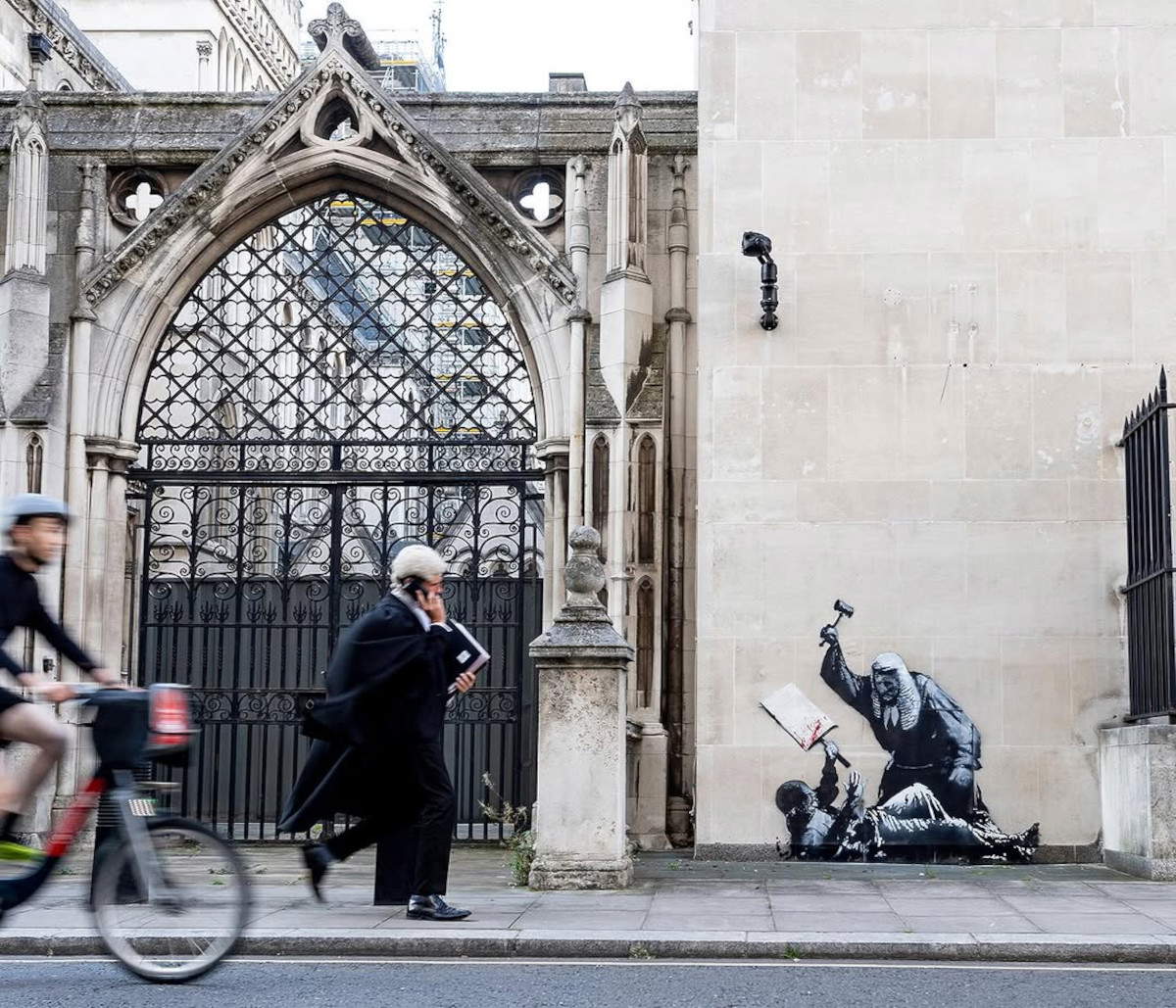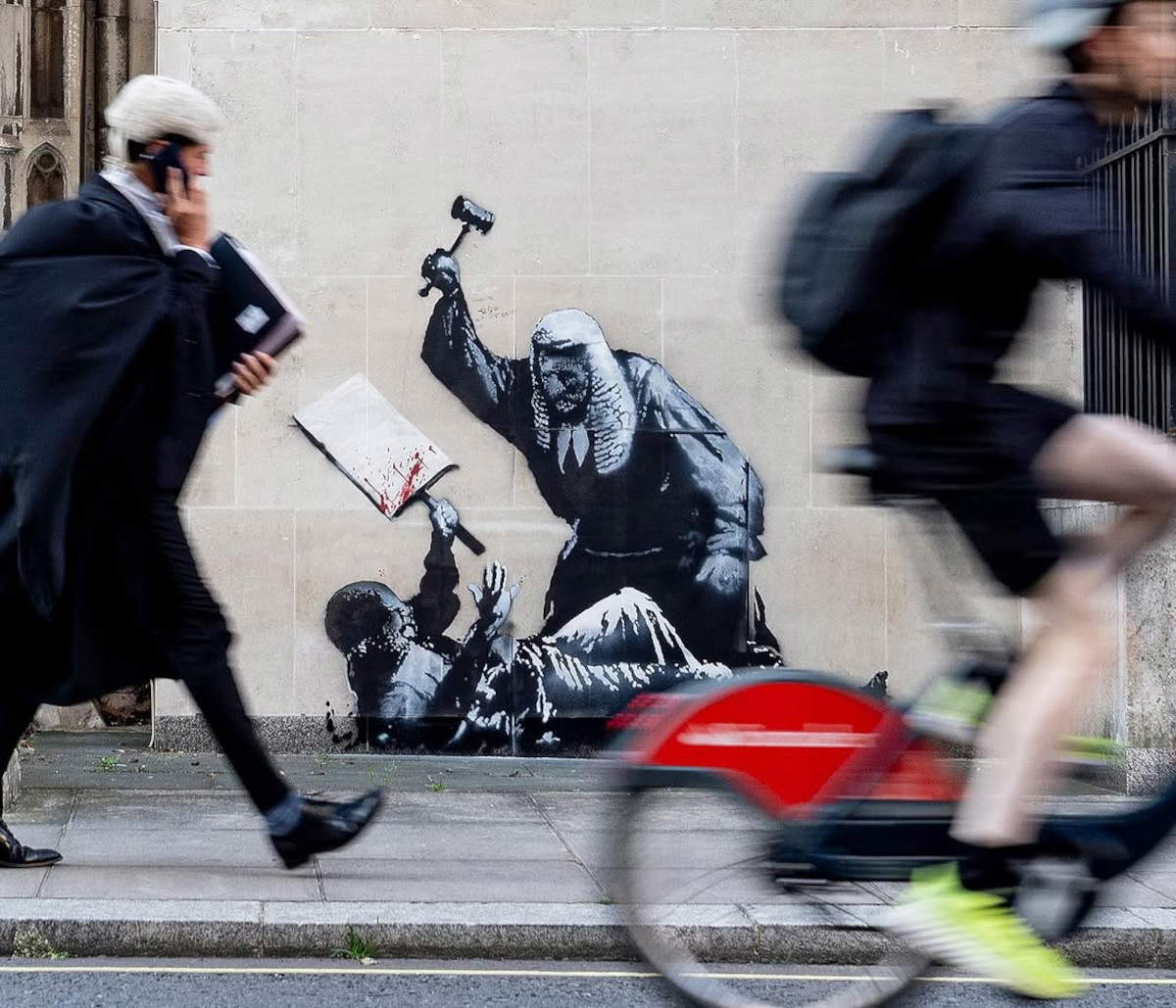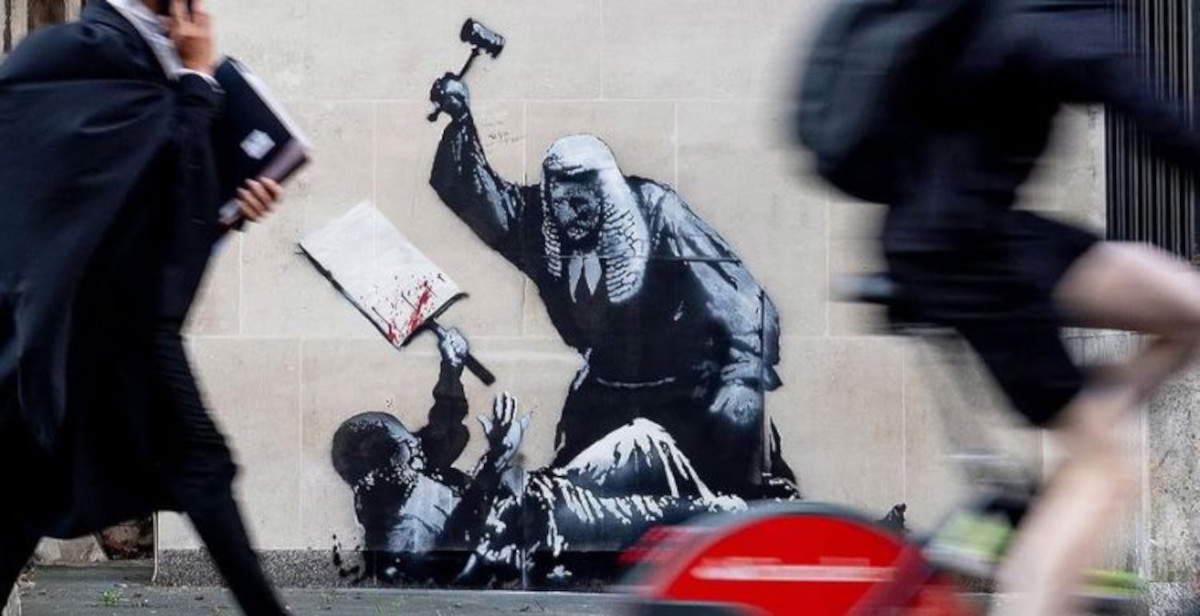A Banksy mural has appeared on London’s Royal Courts of Justice building, one of the iconic sites of British justice. The work depicts a judge in a robe and traditional wig, intent on striking a protester lying on the ground with a trial gavel. The choice of location, which houses both the High Court and the Court of Appeal, had an immediate effect: as written by the Open magazine, the Metropolitan Police has launched a vandalism investigation and the administration has already arranged for the mural to be removed.
According to reports in the Telegraph, the investigation could jeopardize Banksy’s anonymity, which has been one of the central elements of his artistic identity for decades. Indeed, if an actual indictment were to come, theartist could not remain in the shadows: his name, hitherto kept secret, would be made public for judicial reasons. Investigations launched by the London police aim to verify whether the artist was directly responsible and what damage was caused to the building, which is publicly owned. Under British law, the maximum penalty for damage in excess of £5,000 is 10 years’ imprisonment. If, on the other hand, the amount turns out to be less, the penalty could be limited to a fine of 2,500 pounds or a maximum of three months in prison. For now, the mural has been covered with plastic sheeting and planted by authorities pending final removal.


The significance of the work ties in with the ongoing protests against the Labour-led Keir Starmer government’s decision to classify Palestine Action as a “terrorist organization.” Two days before the mural appeared, 890 protesters had been arrested in Westminster during a demonstration against the measure. Groups supporting Palestine Action include Defend Our Juries, which interpreted Banksy’s intervention as a visual denunciation of political repression. According to Open, a spokesperson for the movement called the work a powerful portrait of the brutality unleashed by the government’s decision and Minister Yvette Cooper’s position, according to their reading.
The direct connection to a topical political issue heightens the mural’s impact and, at the same time, the weight of legal consequences. The placement on an institutional building such as the Royal Courts of Justice amplifies the provocative nature of the work, making it more difficult to view it in the same way as the artist’s other interventions on private walls or suburban urban spaces. At the moment, neither Banksy nor people close to him have issued statements on the case. The broader question remains, which goes beyond the single image depicted on the London wall: how far will British justice go in treating Banksy’s works as mere acts of vandalism?
 |
| Banksy's anonymity at risk after mural on London's Royal Courts of Justice building |
Warning: the translation into English of the original Italian article was created using automatic tools. We undertake to review all articles, but we do not guarantee the total absence of inaccuracies in the translation due to the program. You can find the original by clicking on the ITA button. If you find any mistake,please contact us.